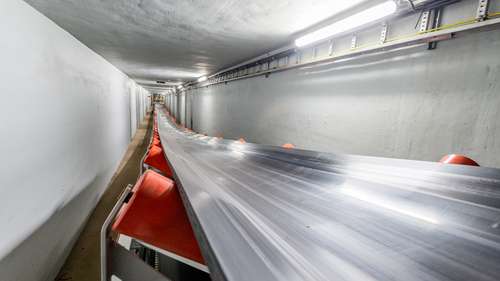
In late 2015, a fire caused significant damage to the fertilizer plant of OCI Nitrogen in Geleen. The fire destroyed the cellar space for loading fertilizer and damaged the energy supply for the entire system. Jos Claassen, the plant manager, returned from holiday to lead the efforts to repair and rebuild the plant. After five months, production was restarted with a new loading facility and updated technical facilities. The electricity supply was also replaced with modern transmitter spaces. The organization worked together with contractors and Sitech Services to successfully restore production.
In late 2015, an internal fire caused devastating damage to the fertilizer plant of OCI Nitrogen in Geleen. The fire was limited to the cellar space for the loading of fertilizer. However, because of the heat, the energy supply for the entire system was damaged beyond repair. The power supply failed completely. In addition to the halt in production, the lighting and computer failures resulted in a grim atmosphere in the offices. Jos Claassen, plant manager, was on holiday. He booked the first available flight back and within three days he was at the helm again to save the ship.
Resilience
“I was really gutted by the fire”, says Jos Claassen. “However, I am proud about how we dealt with the effects of the fire. We took a very cautious approach, worked incredibly hard and showed resilience. And we ended up with a state-of-the-art plant.” The fire had a huge impact on the organisation. No effort was spared in getting the plant up and running again. A crucial aspect was the replacement of the entire e-system. “After just over five months, the fertilizer production could be restarted, which was a huge achievement!”, says Claassen. “At a time like that, you appreciate the value of effective cooperation with our permanent technical service provider Sitech Services. They were very involved and assisted in creating temporary and permanent solutions and could quickly adapt in supplying the right people.”
Spick and span
When production was restarted, temporary facilities had to be used for the logistics. The loading facility for the fertilizer granules dated from the 1960s and thanks to various adjustments was still functioning up until the fire. When the repair work was carried out, it was decided to renew the loading facility entirely. The facility capacity was raised to 1.5 million tonnes of fertilizer per year and powerful extraction systems were installed. The space has been ergonomically designed for better operation and maintenance. Moreover, energy-efficient LED lighting has been provided. A variety of preventative and repressive measures have been taken including cameras and a sprinkler system. What was previously a fairly dusty 120-metre cellar has now become a clean, pleasant working environment with up-to-date technical facilities.
New energy
The electricity supply for the fertilizer production was more than 50 years old. “Add to that the various extensions and adjustments and you end up with dozens of metres of cable and a whole range of distributors and transformers”, Jos Claassen explains. “These have been replaced by two new modern transmitter spaces that have been set up separately from the plant. For these spaces too, all possible safety measures have been taken: cameras, ventilation systems, and fire alarms. Everyone within the organisation was ready to help with the ‘reconstruction’.” With the assistance of contractors and Sitech Services, the organisation and the production are in full swing again.